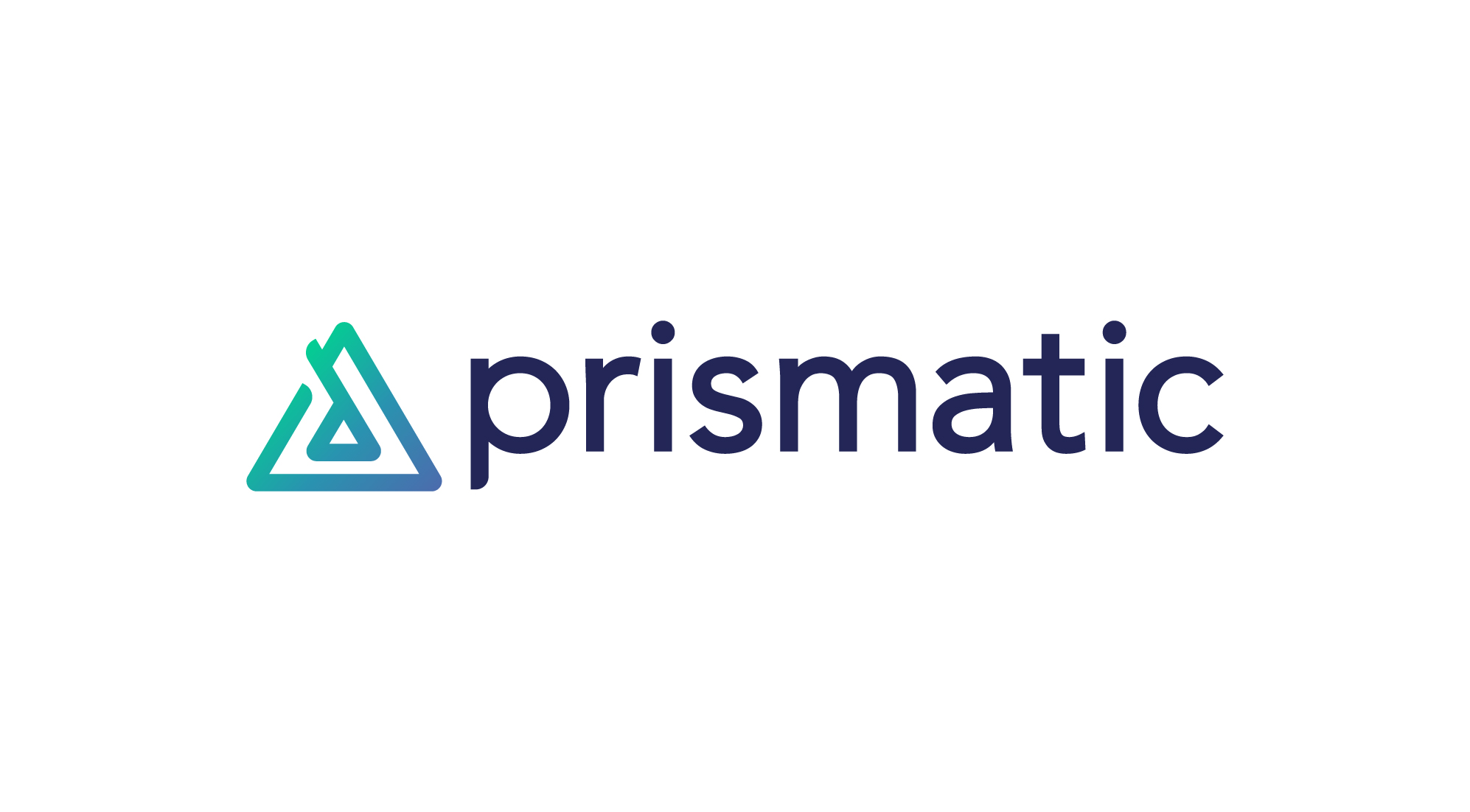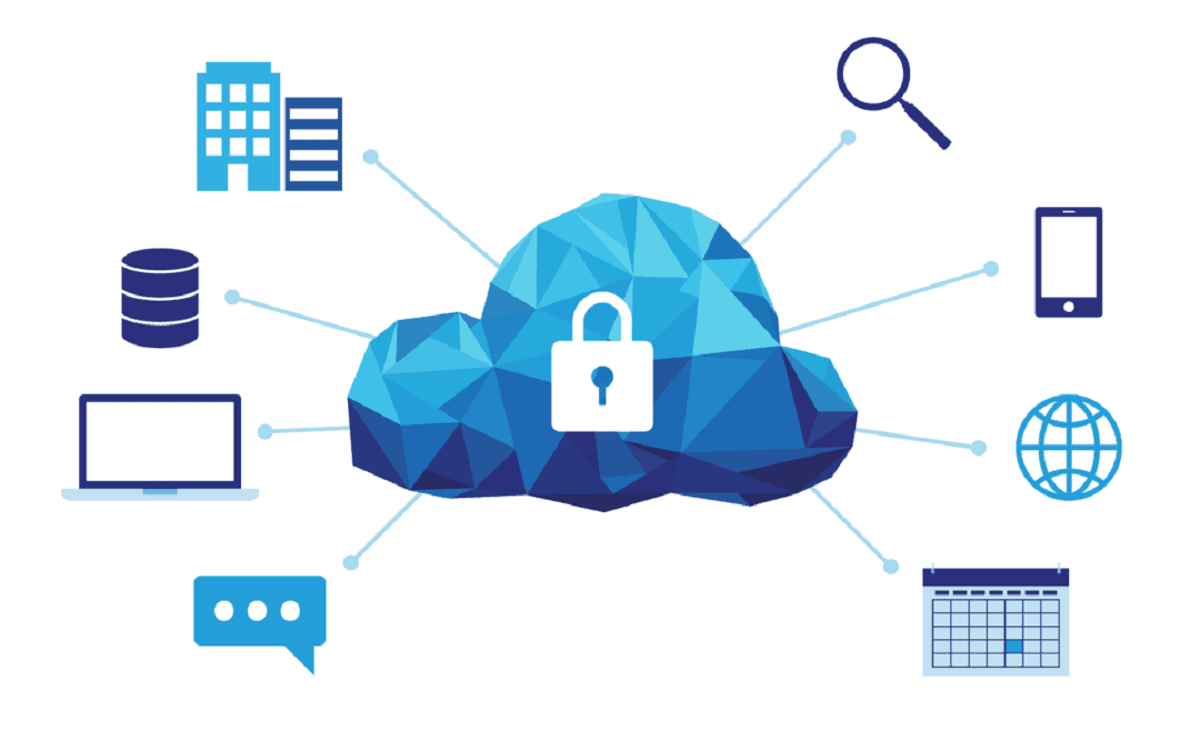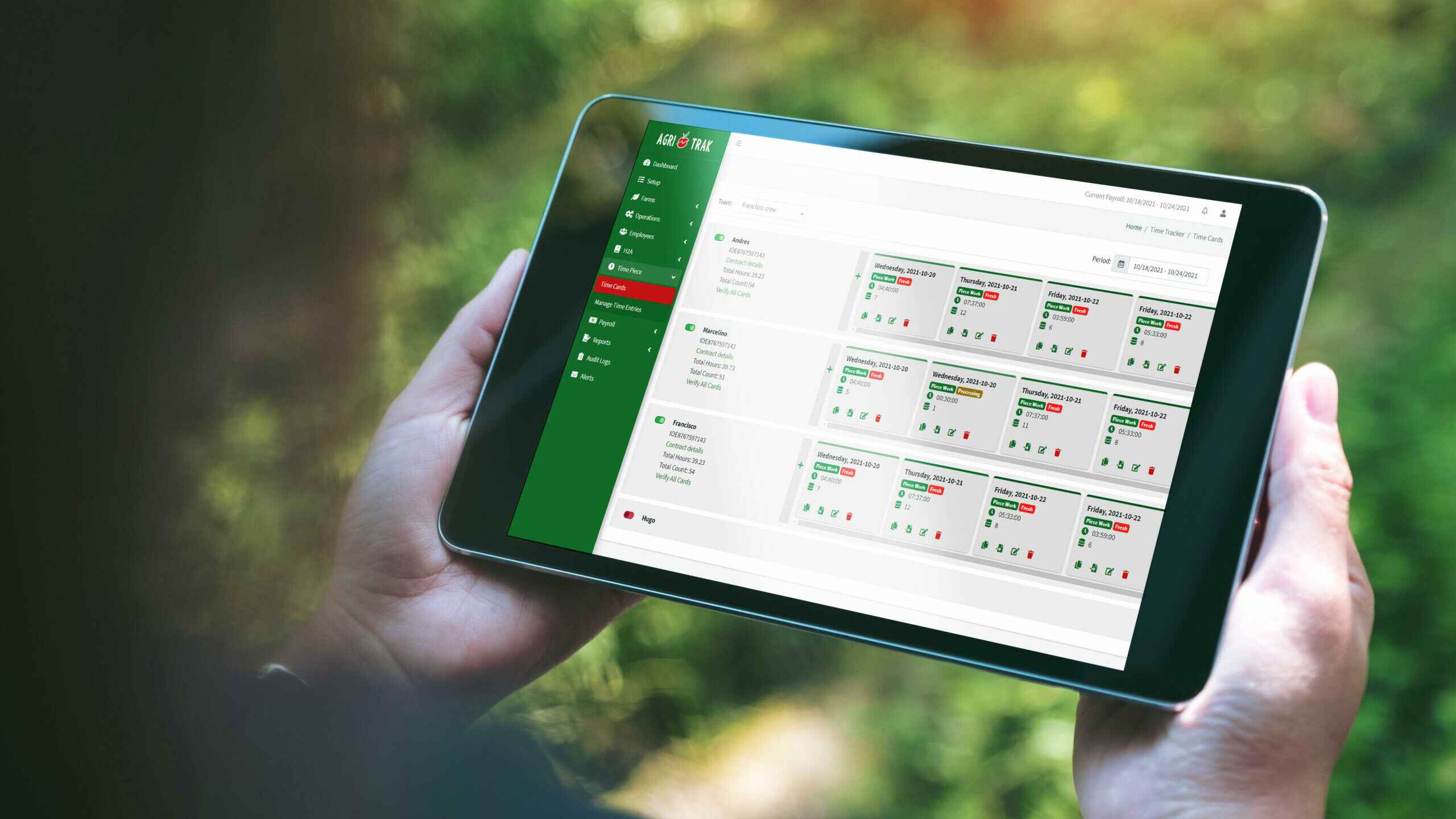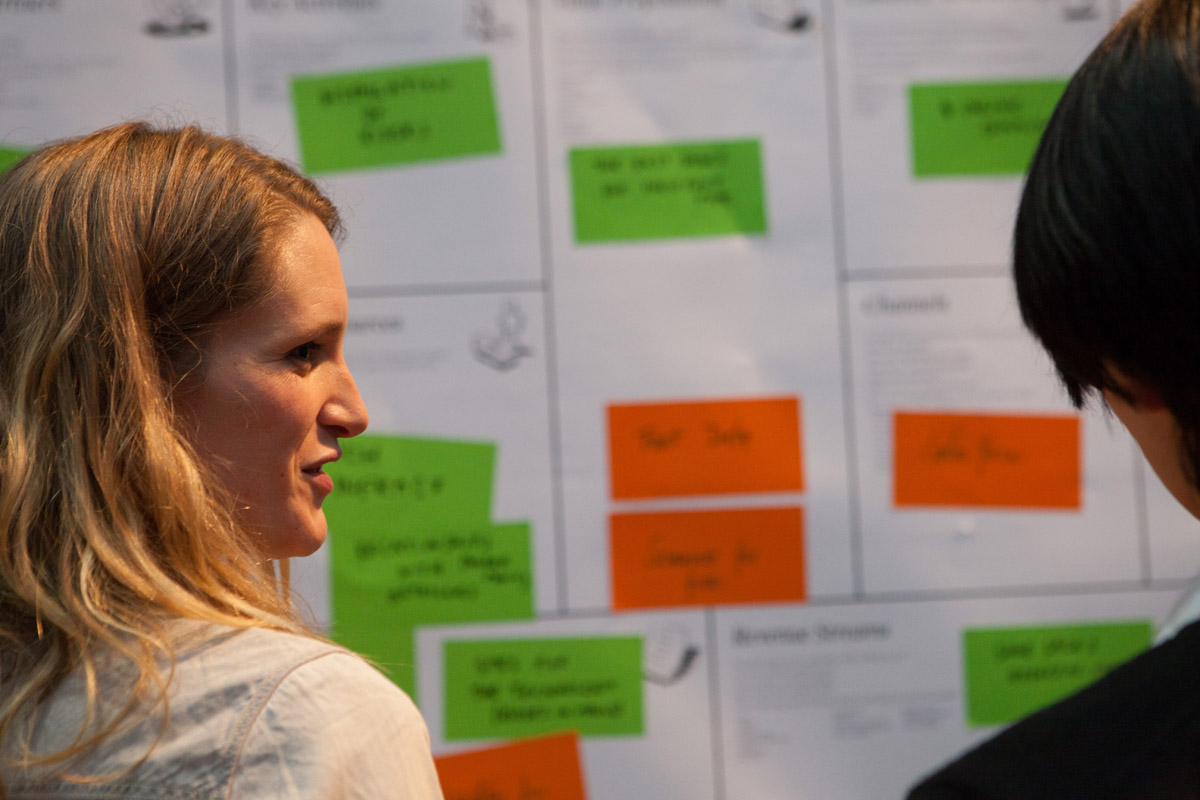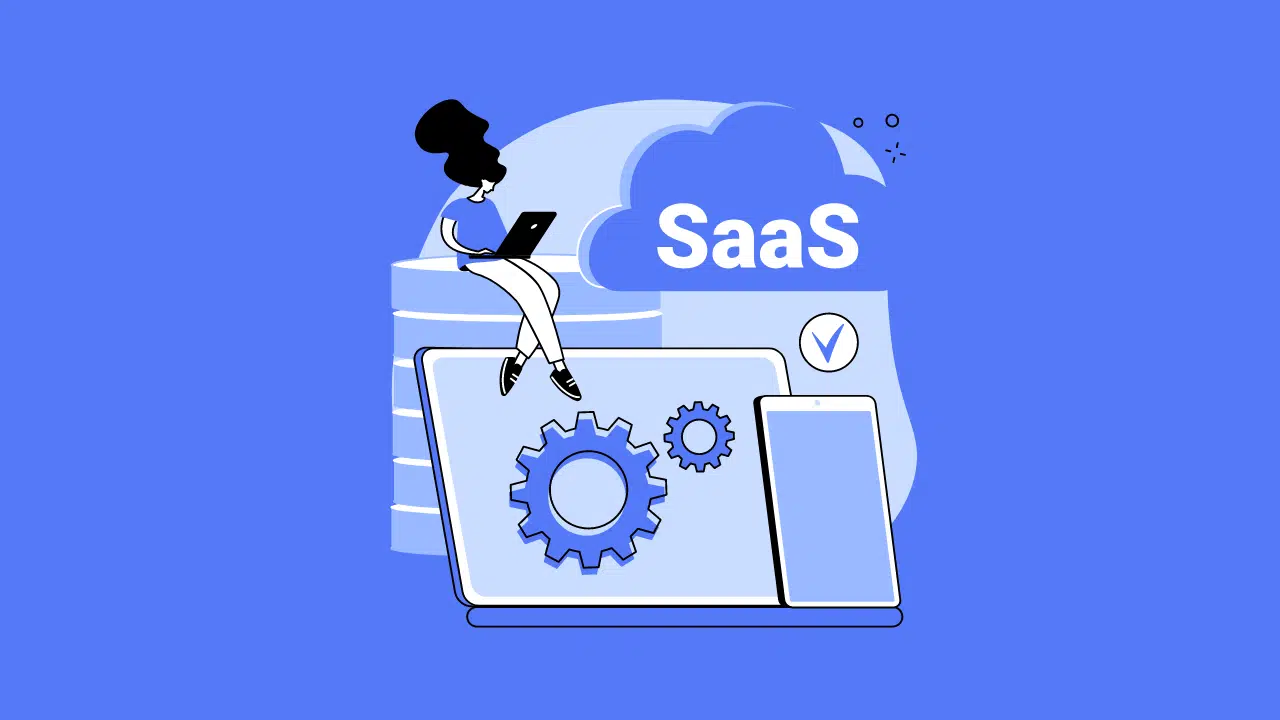Introduction
Welcome to the world of Software as a Service (SaaS) startups! In today’s digital age, the SaaS industry has experienced tremendous growth, revolutionizing the way software is delivered and consumed. If you’re interested in entrepreneurship and technological innovation, starting a SaaS company can be an exciting and lucrative venture.
But what exactly is a SaaS startup? How does it differ from traditional software companies? In this article, we will explore the definition and characteristics of a SaaS startup, the advantages and challenges of entering the SaaS market, and the key steps to successfully launch and grow your own SaaS company.
SaaS stands for Software as a Service, a cloud-based software delivery model where users can access and use applications over the internet without the need for installation or local infrastructure. Instead of purchasing and maintaining software licenses, customers subscribe to a SaaS service, typically on a monthly or annual basis, and access it through a web browser or mobile app.
Unlike traditional software companies that sell products on a one-time basis, SaaS startups provide ongoing services and support, continuously improving and updating their software to meet the evolving needs of their customers.
The beauty of the SaaS model is its scalability and accessibility. With SaaS, startups can reach a wide range of customers globally, from small businesses to large enterprises, without geographical limitations. Furthermore, SaaS companies can harness the power of data analytics to gain insights into user behavior, drive product improvements, and deliver personalized experiences.
Now that we have a basic understanding of what a SaaS startup is, let’s delve deeper into the characteristics that set them apart from traditional software companies.
Definition of SaaS Startup
A SaaS startup is a company that develops and delivers software applications as a service. This means that instead of selling software licenses or physical products, SaaS startups offer their software on a subscription basis, typically accessed through a web browser or mobile app.
Unlike traditional software companies that require customers to install and maintain software on their own servers or computers, SaaS startups host and manage the software on cloud-based servers. This allows users to access the software anytime and anywhere, without the need for complex installations or updates.
One of the defining characteristics of a SaaS startup is its focus on recurring revenue. Instead of relying on one-time purchases, SaaS companies generate revenue through ongoing subscriptions, offering different pricing tiers and plans to cater to the varying needs of their customers. This subscription-based model provides a predictable revenue stream and allows for continuous product development and improvement.
SaaS startups also prioritize customer satisfaction and retention. Since customers are subscribing to a service rather than purchasing a product, SaaS companies place a strong emphasis on delivering value, providing excellent customer support, and maintaining high levels of user engagement. By building strong relationships with their customers, SaaS startups can increase customer retention rates and build a loyal user base.
Another key aspect of SaaS startups is their agility and scalability. The cloud-based infrastructure enables SaaS companies to quickly scale up or down based on user demand, without the need for significant infrastructure investments. This flexibility allows startups to adapt to market changes, add new features, and expand their customer base more easily compared to traditional software companies.
In summary, a SaaS startup is a company that develops and delivers software applications as a service through a subscription-based model. It utilizes cloud-based infrastructure to provide accessibility, scalability, and recurring revenue. By focusing on customer satisfaction and delivering value, SaaS startups can forge ahead in the competitive software industry.
Characteristics of a SaaS Startup
SaaS startups possess several distinct characteristics that set them apart from traditional software companies. Understanding these characteristics is essential for aspiring SaaS entrepreneurs and investors. Let’s explore some of the key characteristics of a SaaS startup:
- Subscription-based model: SaaS startups operate on a subscription-based pricing model, where customers pay a recurring fee for access to the software. This model provides a steady stream of revenue and allows for ongoing customer relationships.
- Cloud-based infrastructure: Unlike traditional software companies that require customers to install software locally, SaaS startups host their software on cloud-based servers. This eliminates the need for complex installations and allows users to access the software from any device with an internet connection.
- Scalability: SaaS startups have the ability to scale their operations quickly and efficiently. With a cloud-based infrastructure, they can accommodate a growing user base without the need for significant investments in hardware or infrastructure.
- Data-driven approach: SaaS startups leverage data and analytics to drive decision-making and improve their software offerings. They collect and analyze user data to gain insights into customer behavior, preferences, and usage patterns, enabling them to deliver personalized experiences and continuously refine their product.
- Continuous updates and improvements: SaaS startups are committed to delivering ongoing updates and improvements to their software. Unlike traditional software companies that release periodic versions, SaaS startups can release frequent updates, fixing bugs, adding new features, and addressing user feedback.
- Customer-centric focus: Customer satisfaction and retention are top priorities for SaaS startups. They invest in providing excellent customer support, maintaining high levels of engagement, and continuously seeking feedback from their users. By building strong relationships with customers, SaaS startups can foster loyalty and reduce churn.
- Agile development methodology: SaaS startups often employ agile development methodologies, which emphasize iterative development, collaboration, and flexibility. This allows them to respond quickly to market changes, adapt to evolving customer needs, and deliver features in shorter release cycles.
These characteristics collectively contribute to the success of SaaS startups by providing a competitive edge in the software market. By embracing cloud technology, prioritizing customer satisfaction, and leveraging data-driven insights, SaaS startups can remain agile, scalable, and customer-focused, ensuring long-term growth and sustainability.
Advantages of Starting a SaaS Company
Starting a SaaS company comes with numerous advantages that make it an attractive business model for entrepreneurs. Let’s explore some of the key advantages of starting a SaaS company:
- Recurring Revenue: One of the primary advantages of a SaaS business is the predictable recurring revenue stream. Instead of relying on one-time purchases, SaaS companies generate revenue through subscription-based pricing models. This allows for long-term financial stability and facilitates better planning for growth and innovation.
- Scalability: SaaS companies have the potential to scale rapidly as their business grows. Since their software is hosted on cloud-based servers, they can easily accommodate a growing user base without significant investments in infrastructure. This scalability allows SaaS companies to expand their operations efficiently and reach a global audience.
- Lower Barrier to Entry: Compared to traditional software companies, starting a SaaS company generally involves lower upfront costs. With cloud-based infrastructure, SaaS startups can avoid the expense of building and maintaining on-premises servers. Additionally, the subscription-based model helps generate revenue early on, reducing the need for large upfront capital.
- Flexibility and Adaptability: SaaS companies can quickly adapt to changing market demands and customer needs. With agile development methodologies, they can release frequent updates and improvements, ensuring their software remains competitive and meets evolving customer expectations. This agility allows SaaS companies to pivot and scale their offerings to stay ahead of the competition.
- Global Reach: With the internet as their distribution channel, SaaS companies can reach a global audience without significant geographical limitations. This global reach enables them to tap into diverse markets, expand their customer base, and generate revenue from different regions around the world.
- Data-driven Insights: SaaS companies have access to valuable user data, allowing them to gather insights into customer behavior, preferences, and usage patterns. By leveraging data analytics, they can make informed decisions about product development, marketing strategies, and customer engagement. This data-driven approach empowers SaaS companies to deliver personalized experiences and continuously improve their software.
These advantages highlight the potential for success and growth in the SaaS industry. With recurring revenue, scalability, lower barriers to entry, flexibility, global reach, and data-driven insights, starting a SaaS company can be a rewarding venture for those looking to innovate, disrupt traditional business models, and build a sustainable business in the digital era.
Challenges in Building a SaaS Startup
While starting a SaaS company offers numerous advantages, it also comes with its fair share of challenges. Understanding and preparing for these challenges is crucial for the success of your SaaS startup. Let’s explore some of the common challenges in building a SaaS startup:
- Intense Competition: The SaaS market is highly competitive, with numerous established players and new startups entering the space regularly. To succeed, your SaaS startup needs to identify a unique selling proposition (USP) and differentiate itself from competitors. Building a strong brand, focusing on customer experience, and continuously innovating are essential to stand out in a crowded marketplace.
- Technical Complexity: Developing a SaaS product involves dealing with technical complexities. From building a scalable architecture to ensuring data security and handling high traffic volumes, the technical aspects of running a SaaS startup can be challenging. Hiring skilled developers, architects, and other technical professionals will be crucial in overcoming these challenges.
- Ensuring Customer Acquisition: Acquiring new customers in the competitive SaaS industry can be a daunting task. Building an effective marketing strategy, understanding your target market, and leveraging various channels such as content marketing, social media, and search engine optimization (SEO) are key to attracting and converting potential customers. Additionally, establishing a strong customer support system can help build trust and loyalty.
- Customer Retention and Churn: Retaining customers is just as important as acquiring them. SaaS startups often face the challenge of high customer churn rates, where customers opt to cancel their subscriptions. To combat churn, it’s crucial to focus on delivering value, providing excellent customer support, and continuously engaging with your customer base. Understanding and addressing the reasons behind churn can help improve customer retention.
- Financial Management: Managing finances is an ongoing challenge for any startup, including SaaS companies. It’s crucial to have a clear understanding of your costs, including infrastructure, development, customer acquisition, and ongoing maintenance. Building a solid financial plan, tracking key metrics, and ensuring a healthy cash flow are essential to sustain and grow your SaaS startup.
- Adapting to Market Changes: The SaaS industry is constantly evolving, with new technologies and market trends emerging. It’s important to stay agile and adapt to these changes to remain competitive. This may involve adding new features, expanding into new markets, or even pivoting your business model to meet evolving customer needs.
By being aware of and addressing these challenges, you can position your SaaS startup for success. Building a strong brand, investing in technical expertise, acquiring and retaining customers, effectively managing finances, and embracing change are key factors in overcoming the challenges and building a thriving SaaS business.
Steps to Start a SaaS Company
Starting a SaaS company requires careful planning, strategic execution, and a deep understanding of both the technical and business aspects. If you’re ready to embark on this entrepreneurial journey, here are the key steps to start a SaaS company:
- Identify a Market and Validate Your Idea: Start by identifying a target market for your SaaS product. Conduct market research to understand the needs, pain points, and preferences of potential customers. Validate your idea by gathering feedback from potential users and ensuring there is a demand for your product in the market.
- Define Your Value Proposition: Clearly define your value proposition and how your SaaS product will solve a specific problem for your target market. Differentiate yourself from competitors by highlighting unique features, benefits, or pricing strategies that will attract customers.
- Build a Minimum Viable Product (MVP): Develop a minimum viable product (MVP) that fulfills the basic functionality of your SaaS product. Focus on the core features and prioritize the ones that will deliver the most value to your target market. The MVP will allow you to gather feedback from early users and iterate on your product based on their needs.
- Develop Your SaaS Infrastructure: Invest in building a reliable and scalable infrastructure to host and deliver your SaaS product. This includes cloud hosting, data storage, security measures, and disaster recovery plans. Consider partnering with a reputable cloud service provider to ensure the stability and scalability of your infrastructure.
- Create a Pricing Strategy: Determine your pricing model and strategy based on your target market, the value you provide, and your competitive analysis. Consider offering multiple pricing tiers or plans to cater to different customer segments. Continuously evaluate and adjust your pricing based on customer feedback and market dynamics.
- Establish a Customer Support System: Customer support plays a crucial role in the success of a SaaS company. Develop a comprehensive customer support system that includes various channels such as email, live chat, and knowledge base. Provide proactive and responsive support to ensure customer satisfaction and minimize churn.
- Implement Effective Onboarding: Create an onboarding process that guides new users through the setup and initial usage of your SaaS product. Make it easy for users to get started and offer resources such as tutorials, documentation, and video guides. A smooth onboarding experience will increase user adoption and reduce churn.
- Market and Promote Your SaaS Product: Develop a marketing and promotion strategy to generate awareness and attract customers to your SaaS product. Utilize digital marketing channels such as content marketing, social media, SEO, and paid advertising to reach your target audience. Consider leveraging partnerships, influencer marketing, and referral programs to expand your reach.
- Measure Key Metrics and Iterate: Continuously measure and analyze key metrics such as user engagement, customer acquisition cost (CAC), customer lifetime value (CLTV), churn rate, and conversion rates. Use these insights to iterate on your product, pricing, marketing, and overall business strategy to drive growth and improve customer satisfaction.
Starting a SaaS company is a complex yet rewarding endeavor. By following these steps and continuously learning and adapting along the way, you can lay a solid foundation for the success and growth of your SaaS startup.
Finding the Right Market for Your SaaS Startup
One of the crucial steps in building a successful SaaS startup is finding the right market to target. Choosing the right market will determine the potential for growth, customer demand, and the overall success of your SaaS product. Here are some key considerations to help you find the right market for your SaaS startup:
- Identify a Specific Problem: Start by identifying a specific problem or pain point that your SaaS product can solve. Look for problems that are significant and widespread enough to attract a sizable market. Conduct market research, analyze industry trends, and talk to potential customers to gain insights into their needs and pain points.
- Evaluate Market Size and Growth Potential: Assess the market size and growth potential of the problem you have identified. Is the market large enough to support your startup’s growth? Are there emerging trends or market shifts that could present opportunities for your SaaS product? Consider factors such as industry growth rate, customer demographics, and market dynamics to determine the potential of your target market.
- Understand Customer Segments: Gain a deep understanding of the different customer segments within your target market. Identify their unique needs, preferences, and behaviors. This will help you tailor your SaaS product and marketing strategies to effectively target and attract these specific customer segments.
- Analyze Competition: Conduct a thorough analysis of your competition in the target market. Evaluate their products, pricing, marketing strategies, and customer feedback. Identify any gaps or opportunities that you can capitalize on. Differentiate your SaaS product by offering a unique value proposition that sets you apart from competitors.
- Consider Industry Regulations and Compliance: Be aware of any industry-specific regulations or compliance requirements that may impact your SaaS product. Understanding and complying with these regulations is crucial to avoid legal issues and build trust with your customers.
- Validate your Market: Validate your target market by conducting market research and talking to potential customers. Gather feedback, conduct surveys, or run pilot programs to test the demand for your SaaS product. Utilize online communities, forums, and social media platforms to engage with your target audience and gain insights into their needs and expectations.
- Consider Niche or Vertical Markets: Explore the potential of niche or vertical markets within your broader target market. These markets may have specific needs or pain points that can be effectively addressed by your SaaS product. Focusing on a niche market can help differentiate your startup and establish a strong presence.
- Evaluate Pricing Potential: Assess the pricing potential of your target market. Are customers willing to pay for the value your SaaS product provides? Analyze the pricing strategies of your competitors and consider factors such as market demand, customer budgets, and perceived value when determining your pricing strategy.
Finding the right market for your SaaS startup requires careful analysis, research, and validation. By identifying a specific problem, evaluating the market size and growth potential, understanding your customer segments, analyzing competition, and considering industry regulations, you can make an informed decision about your target market. Stay adaptable and open to feedback as you fine-tune your positioning and strategies to address the needs of your chosen market.
Building a Minimum Viable Product (MVP) for your SaaS Startup
Building a Minimum Viable Product (MVP) is a crucial step in launching your SaaS startup. An MVP allows you to validate your product idea, gather feedback from early users, and iterate on your product based on real-world insights. Here are the key considerations when building an MVP for your SaaS startup:
- Identify Core Features: Start by identifying the core features that are essential to solving the primary problem or pain point for your target market. Focus on designing and developing these features first to create a functional product that delivers value to your users. Avoid feature creep and prioritize simplicity and usability.
- Keep it Simple: Your MVP should be simple and straightforward, emphasizing the core functionalities. Avoid adding unnecessary complexities or advanced features at this stage. Strive for a clean and intuitive user experience that allows users to easily understand and use your product.
- Build for Scalability: While you are starting with the minimum set of features, it’s important to build your MVP with scalability in mind. Ensure that your underlying architecture and infrastructure can handle an increasing user base and accommodate future feature enhancements without major disruptions.
- Create a User-Friendly Interface: Design an interface that is user-friendly and visually appealing. Focus on creating an intuitive user experience that guides users through the primary workflows of your SaaS product. Utilize best practices in user interface (UI) and user experience (UX) design to enhance usability and engagement.
- Integrate Basic Functionality: Integrate basic functionality into your MVP to showcase the value proposition of your SaaS product. This may include features such as user registration, data input and retrieval, basic reporting, and any other essential functions that demonstrate the core value of your product.
- Test and Gather Feedback: Release your MVP to a small group of users who represent your target market. Encourage them to provide feedback, report any issues, and share suggestions for improvement. Use this feedback to identify areas for improvement, refine your product, and prioritize future development efforts.
- Iterate and Improve: Based on the feedback received from early users, iterate and improve your MVP. Focus on addressing the most critical feedback and adding features or enhancements that align with user needs and expectations. This iterative process allows you to refine your product and increase its market fit over time.
- Continuously Test and Validate: Even after launching your MVP, continue to gather feedback and validate your product assumptions. Conduct user testing sessions, collect data on user behavior and engagement, and make data-driven decisions to drive further iterations and improvements.
Building an MVP for your SaaS startup allows you to validate your product idea and gather valuable insights from real users. By focusing on core features, keeping it simple, designing a user-friendly interface, and continuously iterating based on user feedback, you can build a solid foundation for your SaaS product and set the stage for further growth and development.
Scalability and Growth Strategies for SaaS Startups
Scalability is a crucial aspect of building a successful SaaS startup. As your user base grows, your SaaS product should be able to handle increased demand and effectively accommodate the needs of a larger customer base. Here are essential strategies for achieving scalability and fostering growth in your SaaS startup:
- Design a Scalable Architecture: Build a scalable infrastructure that can handle increased user traffic and data storage. Utilize cloud-based technologies and services that allow for easy scaling without incurring significant upfront costs. Design a modular and flexible architecture that enables you to add new features and functionalities seamlessly.
- Optimize Performance: Monitor and optimize the performance of your SaaS product to ensure smooth and responsive user experiences. Implement caching mechanisms, optimize database queries, and utilize content delivery networks (CDNs) to minimize latency and improve overall performance. Regularly conduct performance testing to identify bottlenecks and make necessary optimizations.
- Invest in Security: Security is paramount for SaaS startups, as you are responsible for safeguarding customer data. Implement robust security measures, including encryption, secure access controls, and regular security audits. Stay informed about the latest security threats and keep your software and infrastructure up to date with patches and security updates.
- Automate Processes: Automate routine processes to increase efficiency and reduce manual work. Utilize workflow automation tools to streamline tasks such as user onboarding, data processing, and billing. Automation allows your SaaS startup to scale without increasing the burden on your team and allows you to focus on higher-value activities.
- Implement Effective Customer Support: As your customer base grows, it becomes more important to provide excellent customer support. Implement a robust customer support system that includes various channels such as email, chat, and a knowledge base. Leverage automation and self-service options to handle common customer inquiries efficiently, freeing up resources for more complex support cases.
- Create Upselling and Cross-selling Opportunities: Maximize revenue growth by offering upselling and cross-selling opportunities to your existing customer base. Identify additional features, add-on services, or higher-tier plans that can provide more value to your customers. Regularly communicate with your customers, understand their evolving needs, and present relevant upgrade options that align with their business objectives.
- Expand into New Markets: Explore opportunities to expand your SaaS product into new markets or verticals. Conduct market research to identify untapped market segments that could benefit from your solution. Adapt and customize your product, marketing messages, and sales strategies to cater to the specific needs and nuances of these new markets.
- Prioritize User Retention: Retaining existing customers is less costly and more profitable than acquiring new ones. Implement customer success programs to proactively engage and nurture your customer base. Offer regular product updates, exclusive insights, and personalized support to demonstrate value and foster long-term loyalty.
- Form Strategic Partnerships: Collaborate with complementary businesses or platforms to reach new audiences and expand your market reach. Seek partnerships that align with your goals and provide mutually beneficial opportunities for growth. Joint marketing initiatives, integrations, or co-selling arrangements can significantly accelerate your growth trajectory.
- Continuous Innovation: Stay ahead of the competition by continuously innovating and evolving your SaaS product. Actively solicit feedback from customers, track industry trends, and conduct market research to identify new features or functionalities that can further enhance the value you provide. By consistently delivering improvements and staying customer-centric, you’ll foster ongoing growth and maintain a competitive edge.
By implementing these scalability and growth strategies, your SaaS startup can position itself for long-term success. Focus on building scalable architecture, optimizing performance, investing in security, and automating processes. Prioritize customer support, explore new markets, and leverage partnerships. With these strategies in place, your SaaS startup can scale efficiently, attract and retain customers, and capitalize on growth opportunities.
Financing Options for SaaS Startups
Financing is a critical aspect of building and growing a SaaS startup. Securing the necessary funds is essential for product development, marketing, scaling operations, and sustaining growth. Here are some common financing options available for SaaS startups:
- Bootstrapping: Bootstrapping involves self-funding your SaaS startup using personal savings, revenue generated from the business, or contributions from friends and family. This option allows you to have full control over your company but may limit your initial resources and ability to scale quickly.
- Angel Investors: Angel investors are individuals who provide early-stage funding to startups in exchange for equity. They often offer mentorship and expertise, in addition to financial support. Angel investors can be a good option for SaaS startups looking for initial capital and strategic guidance.
- Venture Capital (VC) Funding: Venture capital firms invest in high-growth startups in exchange for equity. VC funding is typically suited for SaaS startups with significant market potential and scalability. It provides larger funding amounts and access to expert advice and resources but involves giving up a portion of your company’s ownership.
- Crowdfunding: Crowdfunding platforms enable SaaS startups to raise funds from a large pool of investors, often through online campaigns. By offering rewards or equity, SaaS startups can gather support from individuals who believe in their vision. Crowdfunding can provide both financial resources and early customer validation.
- Debt Financing: SaaS startups can secure loans or lines of credit from banks or alternative lenders. Debt financing allows SaaS startups to obtain capital while maintaining ownership and control. However, it’s important to carefully assess the repayment terms and interest rates to ensure that the debt is manageable for your startup.
- Accelerator or Incubator Programs: Accelerator or incubator programs offer funding, mentorship, and resources to early-stage startups. In exchange for equity, SaaS startups gain access to a supportive network, guidance, and exposure to potential investors. These programs can provide valuable support during the early stages of your SaaS startup.
- Strategic Partnerships: Forming strategic partnerships with established companies can provide financial support and access to their resources. This can include co-development agreements, joint marketing initiatives, or investment from strategic partners who see value in collaborating with your SaaS startup.
- Government Grants and Subsidies: In some regions, governments offer grants and subsidies to support innovation and entrepreneurship. Research and apply for government programs specifically designed to fund SaaS startups. These grants can provide non-dilutive funding and other forms of support.
- Revenue-Based Financing: Revenue-based financing involves securing funds based on future revenue projections. Instead of equity, investors receive a percentage of the startup’s future revenue until a specified return on investment is met. This option allows SaaS startups to access capital without diluting ownership.
- Strategic Customer Financing: In certain cases, strategic customers may provide funding or prepayment for your SaaS product in exchange for discounts or exclusive access. This alternative financing option allows startups to secure early customers while bolstering their financial position.
Each financing option has its advantages and considerations. It’s important to research and evaluate the specific requirements, implications, and potential trade-offs associated with each option. Determine the financing strategy that aligns with your SaaS startup’s growth plans, financial needs, and long-term objectives.
Marketing and Sales Strategies for SaaS Startups
Effective marketing and sales strategies are essential for the success of SaaS startups. With intense competition in the marketplace, it’s crucial to develop a unique value proposition, reach your target audience, and convert leads into paying customers. Here are key strategies to consider when marketing and selling your SaaS product:
- Define Your Target Market: Identify your target market and develop detailed buyer personas that represent your ideal customers. Understand their pain points, needs, and preferences to tailor your marketing messages and sales approach accordingly.
- Create a Strong Brand: Build a strong brand identity that resonates with your target audience. Develop a unique value proposition and convey it through consistent branding, compelling messaging, and a visually appealing website and marketing materials.
- Content Marketing: Create valuable content that educates and engages your target audience. Develop a content marketing strategy that includes blog posts, whitepapers, case studies, videos, and webinars. Establish your thought leadership and address key pain points to attract and nurture leads.
- Search Engine Optimization (SEO): Optimize your website and create targeted content to improve your organic search visibility. Conduct keyword research and optimize your website’s meta tags, headings, and content to increase your ranking on search engine result pages. Leverage SEO best practices to attract organic traffic and reach potential customers.
- Social Media Marketing: Utilize social media platforms where your target audience is active. Develop a social media strategy to share valuable content, engage with your audience, and build a community around your brand. Leverage social media advertising to target specific customer segments and drive lead generation and conversions.
- Referral Programs and Affiliate Marketing: Encourage your existing customers to refer your SaaS product to others through referral programs. Provide incentives such as discounts, extended trials, or exclusive access. Consider implementing an affiliate marketing program to incentivize affiliates to promote your product and drive sales.
- Partnerships and Influencer Marketing: Collaborate with complementary businesses, industry influencers, and thought leaders to expand your reach and tap into new audiences. Consider co-marketing initiatives, guest posting, joint webinars, or endorsements to increase brand awareness and credibility.
- Demand Generation and Lead Nurturing: Develop a comprehensive demand generation strategy to create awareness and generate leads. Implement lead nurturing campaigns to engage with leads and move them through the sales funnel. Utilize marketing automation tools and personalized communication to nurture leads with targeted content and offers.
- Conversion Optimization: Optimize your website and landing pages to maximize conversions. Implement clear call-to-actions (CTAs), use persuasive copywriting, and minimize friction in the conversion process. Continuously test and analyze your conversion rates to identify areas for improvement and optimize your sales funnel.
- Customer Success and Retention: Prioritize customer success and retention efforts to maximize the lifetime value of your customers. Implement customer onboarding programs, provide ongoing support, and collect feedback to continuously improve your product and customer experience. Offer regular updates and engage with customers through newsletters or exclusive content to foster loyalty.
- Analyze and Optimize: Continuously analyze key marketing and sales metrics to measure the effectiveness of your strategies and tactics. Utilize analytics tools to track website traffic, lead conversions, customer acquisition costs, and customer lifetime value. Use these insights to make data-driven decisions and refine your marketing and sales efforts for better results.
Marketing and selling a SaaS product requires a comprehensive and targeted approach. By defining your target market, developing a strong brand, leveraging content marketing and SEO, building strategic partnerships, and prioritizing customer success, you can effectively reach and convert customers, drive growth, and maximize the success of your SaaS startup.
Customer Success and Retention in SaaS Startups
Customer success and retention are critical for the long-term growth and profitability of SaaS startups. Focusing on delivering value, providing exceptional customer support, and ensuring high levels of customer satisfaction can help drive customer loyalty, reduce churn, and foster sustainable revenue streams. Here are key strategies to prioritize customer success and retention in your SaaS startup:
- Proactive Onboarding: Implement a well-designed onboarding process to help new customers get started with your SaaS product. Provide clear guidance, tutorials, and documentation to ensure a smooth and successful onboarding experience. Deliver value early on and demonstrate the potential of your product to maximize customer engagement.
- Personalized Customer Support: Offer responsive and personalized customer support to address any issues or queries that customers may have. Utilize multiple channels such as email, live chat, and helpdesk systems to provide timely assistance. Training support agents to understand your product thoroughly and empathize with customer needs is also crucial.
- Proactive Communication: Establish open lines of communication with your customers. Regularly reach out to them with relevant product updates, industry news, and exclusive insights. Consider sending newsletters or hosting user community events to foster engagement. Maintaining a consistent and proactive communication strategy helps to strengthen relationships and build trust with your customers.
- Gather and Act on Customer Feedback: Actively seek feedback from your customers and listen to their suggestions and concerns. Conduct surveys, collect feedback through support interactions, or utilize customer feedback tools to gather insights. Analyze this feedback to identify areas for improvement and prioritize product enhancements or feature updates based on customer needs and priorities.
- Regular Check-ins and Success Reviews: Schedule regular check-in calls or success reviews to discuss your customers’ progress and goals. Understand their evolving needs and align your product roadmap to address their requirements. Demonstrate the value your SaaS product provides and provide proactive recommendations or best practices to help them achieve their desired outcomes.
- Continual Product Education: Educate your customers on how to get the most out of your SaaS product. Offer comprehensive documentation, knowledge base articles, video tutorials, and webinars to help customers understand and utilize all the features and functionalities. Invest in ongoing product education to ensure customers are equipped to succeed with your product.
- Customer Segmentation and Personalization: Segment your customer base based on specific criteria such as usage patterns, industries, or company sizes. Tailor your communication, product offerings, and support to address the unique needs of each segment. Provide personalized recommendations and experiences to make customers feel valued and understood.
- Measure and Track Key Metrics: Define and measure key customer success indicators such as customer satisfaction scores, customer retention rates, and expansion rates. Utilize customer analytics tools and capture insights into your customers’ behavior, engagement levels, and usage patterns. Continuously track these metrics to identify trends, pinpoint areas of improvement, and drive data-driven decision-making.
- Proactive Churn Prevention: Anticipate and address churn risks by proactively identifying customers who may be at risk of cancelling their subscription. Develop churn alert systems based on usage triggers or customer behavior patterns. Implement targeted intervention strategies such as personalized outreach, special offers, or additional support to mitigate churn risks.
- Continuous Relationship Building: Customer success and retention require ongoing efforts. Foster strong relationships with your customers by continuously engaging with them. Offer loyalty programs, exclusive content, or early access to new features as a way to further strengthen the bond and incentivize ongoing usage and loyalty.
By prioritizing customer success and retention in your SaaS startup, you can foster strong customer relationships, reduce churn, and drive long-term growth. Engage customers effectively through proactive onboarding, personalized support, regular communication, and continuous product education. Utilize customer feedback, track key metrics, and take proactive measures to prevent churn. By investing in customer success and retention, your SaaS startup can thrive in a competitive market and build a loyal and satisfied customer base.
Conclusion
Building a SaaS startup requires careful planning, execution, and a deep understanding of the unique aspects of the SaaS industry. By understanding the definition and characteristics of a SaaS startup, you can align your efforts to meet the needs of your target market and capitalize on the advantages this business model offers.
Starting with a strong foundation, you can navigate the challenges of building a SaaS startup and take strategic steps to scale and grow your business. From finding the right market and building a minimum viable product (MVP) to implementing effective marketing and sales strategies, there are numerous key considerations to keep in mind.
Scalability and growth are integral to the success of a SaaS startup. By designing a scalable infrastructure, optimizing performance, and prioritizing innovation, you can ensure that your startup can accommodate a growing user base and adapt to market changes.
Financing options play a vital role in funding your SaaS startup. Whether through bootstrapping, angel investors, venture capital, or strategic partnerships, choosing the right financing option is essential to support your growth ambitions.
Marketing and sales strategies are critical to attract and retain customers. By understanding your target market, building a strong brand, utilizing content marketing and SEO, and prioritizing customer success and retention, you can drive growth and establish a loyal customer base.
In conclusion, building a successful SaaS startup requires a combination of strategic planning, customer-centric approach, technical expertise, and continuous iteration. By embracing the unique characteristics of the SaaS industry and implementing the strategies outlined in this article, you can position yourself for long-term success in the rapidly evolving and competitive SaaS market.









